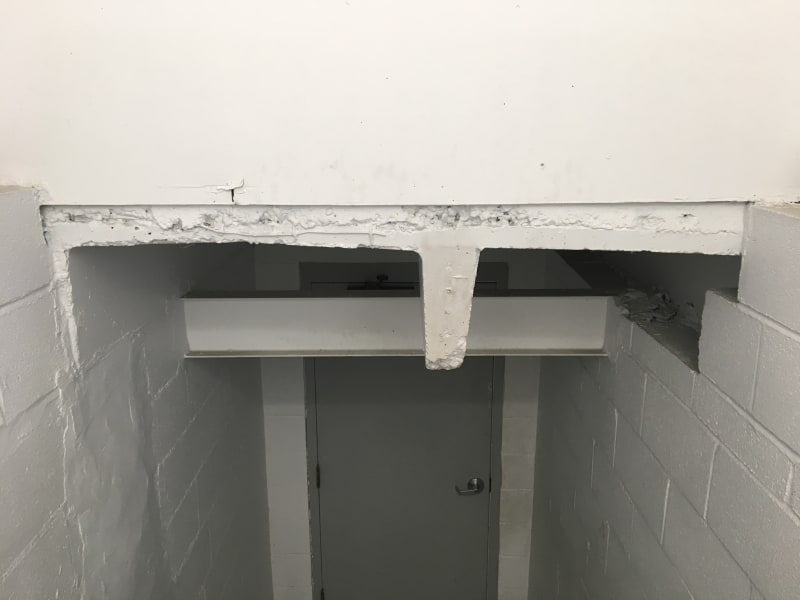T_Bat
Structural
- Jan 9, 2017
- 213
Hey everyone,
I'm looking at some potential renovations to an existing 1950s era building. The floor system appears to be precast channel slabs (13" and 16" deep and about 3'-2" wide). In some areas they bear on CMU walls. In a few areas they bear on a line of beams made from some type of masonry block. Based on my research the beams were likely positioned in the field produced by a company called Breeko out of Nashville. I assume they also made the channel slabs. I'm not sure if it was common to pretension the channels slabs or were they just conventional reinforcement based on the era. This is in middle Tennessee, which believe it or not, was one of the first frontiers for pre/post-tensioning in this era.
Does anyone have any info on Breeko or their products? I've done a deep dive on the google machine. I've located some info in old newspapers and mentions in various old PCI documents but nothing that may help my preliminary analysis. The goal is to try to rate the floor and roof for acceptable occupancies...
If anyone has any info it would be much appreciated!
I'm looking at some potential renovations to an existing 1950s era building. The floor system appears to be precast channel slabs (13" and 16" deep and about 3'-2" wide). In some areas they bear on CMU walls. In a few areas they bear on a line of beams made from some type of masonry block. Based on my research the beams were likely positioned in the field produced by a company called Breeko out of Nashville. I assume they also made the channel slabs. I'm not sure if it was common to pretension the channels slabs or were they just conventional reinforcement based on the era. This is in middle Tennessee, which believe it or not, was one of the first frontiers for pre/post-tensioning in this era.
Does anyone have any info on Breeko or their products? I've done a deep dive on the google machine. I've located some info in old newspapers and mentions in various old PCI documents but nothing that may help my preliminary analysis. The goal is to try to rate the floor and roof for acceptable occupancies...
If anyone has any info it would be much appreciated!








